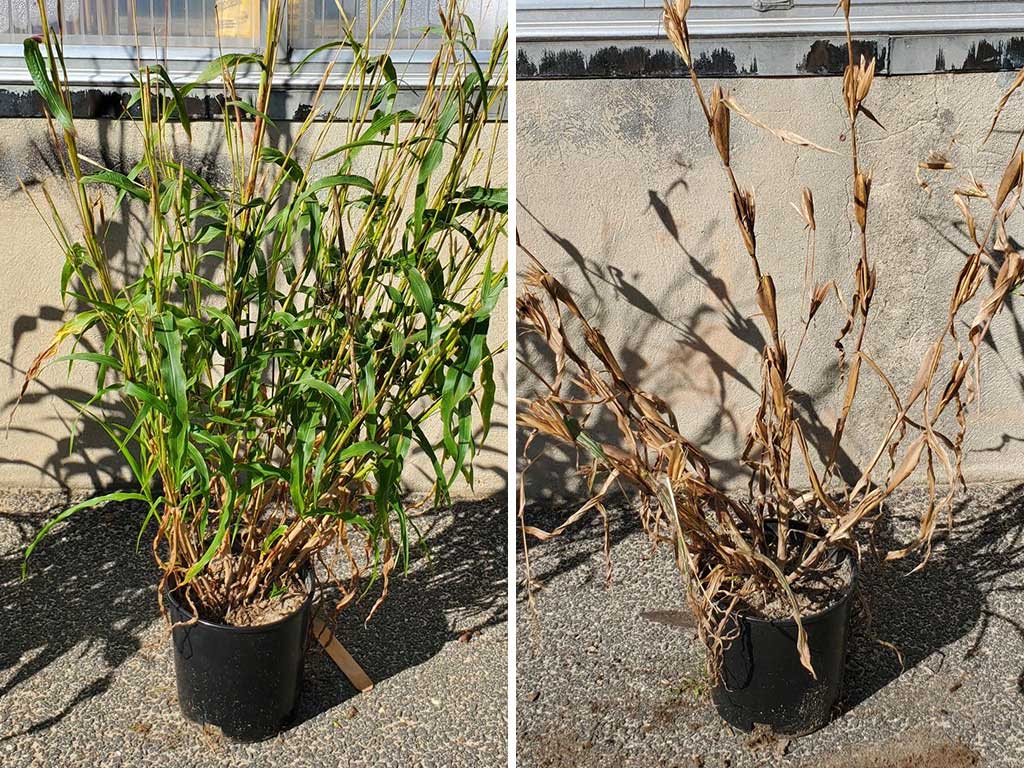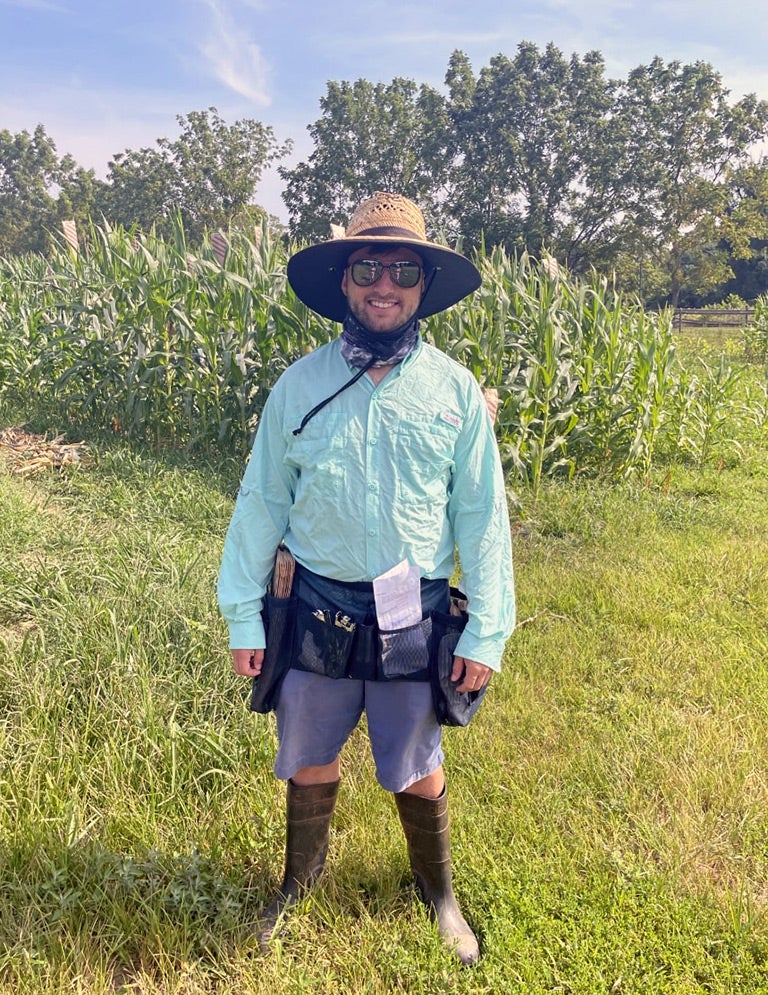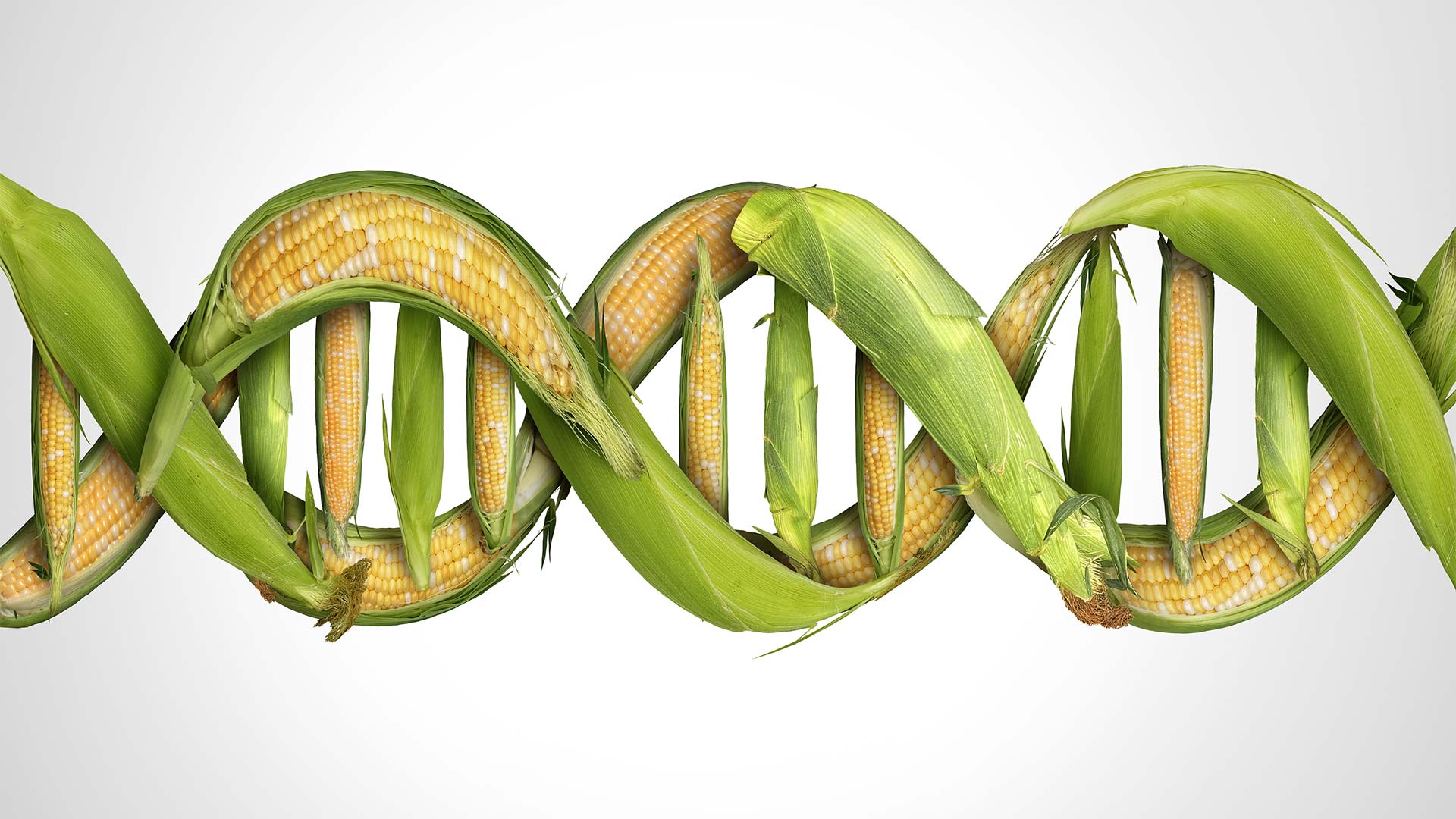The world’s population is projected to hit 10 billion by 2050. As we inch closer each year, the conversation around food demand gets louder. The world’s natural resources are finite, and current farming practices are expected to dry up every last drop. Today, plant scientists at Cold Spring Harbor Laboratory (CSHL) are in a race against the clock to find more sustainable farming options. Kyle Swentowsky, a postdoc in CSHL Professor David Jackson’s laboratory, thinks the answer may lie with perennial corn.
Perennials are found all around us: fruit trees, bushes, grape vines. They are defined as plants that grow, flower, die back, and are reborn in regular cycles. They offer multiple advantages over annual or seasonal crops. These include longer growing seasons, greater yields, better efficiency for storing and recycling nutrients, and deeper roots. Swentowsky explains:
“You can imagine if you’ve been growing the same annual crop for 20 or 50 or 100 years in the same spot, a lot of the surface-level nutrients and water are mostly tapped out. But if you have a crop capable of growing even deeper, you may have access to just a huge amount of resources and water that you didn’t have before.”
Perennials sound like the perfect crop. Most staple crops in the world have relatives that are perennial. But there’s a catch. They haven’t been domesticated as popular crops. Their fruits or grains are often smaller and less tasty, and it’s harder to work with them. So, Swentowsky and other plant scientists are trying to breed attractive perennial traits into current crops. But that’s where they run into the weeds. It turns out the biology is messier and more complicated than anticipated.

The genetics that allow perennial crops to survive winters and grow back by themselves remain complex. Perennial traits include frost tolerance, a plant structure primed for regrowth, and the ability to store nutrients in a “reserve pod,” similar to the way squirrels bury their acorns. Swentowsky started looking for regions of the corn genome that control these traits while he was a Ph.D. student at the University of Georgia. His search continues today at CSHL. But now he’s digging into exactly how these genes and desirable traits work.
Recent progress has been made with crops besides corn, like rice and wheat. There’s now a perennial strain of rice grown on farms in Asia. There’s also a new perennial wheatgrass called Kernza® gaining traction around the world. Over the past decade, scientists were able to take a wild species of perennial wheat and domesticate it to have attractive crop traits. Now, perennial wheat is used to make cereals and other products. Swentowsky says:
“People have done a lot of research on it, and it’s been shown to have some of these sustainable benefits that people have hypothesized about for a long time. And you can actually buy some products, based on Kernza. I know there’s a beer. I’ve actually had it, and it’s really good!”

“I’m very excited that Kyle is tackling this important and difficult question in plant biology using modern genomic tools in our lab,” says CSHL Professor David Jackson. “His work could have huge benefits in sustainable agriculture.”
Ultimately, Swentowsky hopes his research on perennial corn will help create better crops to feed and protect the planet. He says, “The reality is that we need to develop more crop varieties and get more creative with agriculture so we can adapt to a changing climate.”
Written by: Luis Sandoval, Communications Specialist | sandova@cshl.edu | 516-367-6826
